I’ve been thinking a lot about pettiness lately. I live in the U.S. and right now, the American media landscape is all blah blah incivility blah anger blah blah hate. But it feels to me like the great fever of rage-mourning prompted by the 2016 election has now settled down into a less intense, more pervasive atmosphere of snark and slights, subtweets and sarcasm. SNL spoofs rapists. Twitter memes hate crimes. And then there’s the hilarious string of alliterative names for white people losing their minds over black people existing. We’re squarely in an era of pettiness, the Age of the Drag.
Petty comes from petit, the French for small: Think small-minded, mean, snide. Pettiness might seem to trivialize social issues, but it doesn’t necessarily diminish them, at least no more than bad-faith grandstanding does. Plus, intense emotions like love and hate can get you killed. You might lose money or pride off of petty, but nobody’s dying from a subtweet. To mock hateful things like racism, misogyny, and elitism lets us think about them with some distance, without getting caught up in self-seriousness, fury, or despair. If nothing else, it makes them survivable. I’d say “y’all trifling” and strut off with a fluttering hand, but I kinda love pettiness: It’s witty and clever and often contagious.
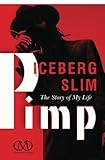

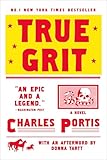
 For example: I’ve wanted for a while to teach a graduate course on everything Roland Barthes ever wrote, as an excuse to read it. (Most professors are just perennial students: We teach the courses we wish we could take.) So I mocked up a syllabus. I titled it, “Everybody Loves Roland.” I was inordinately excited. But then I was asked to teach another course I’d proposed as a second choice, “American Genres,” because it would help students fulfill a program requirement. Well. OK. Fine. I scrapped my syllabus of American Genre-ish fiction by high literary authors—Toni Morrison and Hannah Crafts as “Gothic,” Samuel R. Delany and Octavia Butler as “sci-fi,” Raymond Chandler and Walter Mosley as “noir.” And I went full bestseller: Michael Crichton’s Jurassic Park, Iceberg Slim’s Pimp, Stephen King’s Carrie, Charles Portis’s True Grit, Danielle Steel’s The Gift. It was a petty move over a set of novels that are themselves often considered trifling—the fast food of fiction.
For example: I’ve wanted for a while to teach a graduate course on everything Roland Barthes ever wrote, as an excuse to read it. (Most professors are just perennial students: We teach the courses we wish we could take.) So I mocked up a syllabus. I titled it, “Everybody Loves Roland.” I was inordinately excited. But then I was asked to teach another course I’d proposed as a second choice, “American Genres,” because it would help students fulfill a program requirement. Well. OK. Fine. I scrapped my syllabus of American Genre-ish fiction by high literary authors—Toni Morrison and Hannah Crafts as “Gothic,” Samuel R. Delany and Octavia Butler as “sci-fi,” Raymond Chandler and Walter Mosley as “noir.” And I went full bestseller: Michael Crichton’s Jurassic Park, Iceberg Slim’s Pimp, Stephen King’s Carrie, Charles Portis’s True Grit, Danielle Steel’s The Gift. It was a petty move over a set of novels that are themselves often considered trifling—the fast food of fiction.

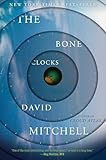
 And so, given my usual reading habits, and the black sci-fi class that I taught again last year, this was My Year of Reading Genre Fiction. I wasn’t alone. Genre is all the rage—this is especially clear in television and film—though it sometimes feels less like a key ingredient and more like a spice that contemporary artists have started shaking over their works (to say nothing of the disavowals). The thing is, it has always struck me as bizarre that professors mostly teach students how to read (and imitate) the “literary canon”—essentially the same one I was tasked to ruminate over as a student. You’d think this recycling project would be less tenable now that some of our greatest living writers (Margaret Atwood, David Mitchell, Chimamanda Ngozi Adichie) have publicly embraced genre fiction. Haven’t we diversified the syllabus, if not decolonized it, by now? Maybe, but let’s be real: Even the non-white, non-male, non-rich writers on our reading lists are still mostly “literary”; as Du Bois might have put it, they “sit with Shakespeare and wince not.” Our anti-elitism is still elitist.
And so, given my usual reading habits, and the black sci-fi class that I taught again last year, this was My Year of Reading Genre Fiction. I wasn’t alone. Genre is all the rage—this is especially clear in television and film—though it sometimes feels less like a key ingredient and more like a spice that contemporary artists have started shaking over their works (to say nothing of the disavowals). The thing is, it has always struck me as bizarre that professors mostly teach students how to read (and imitate) the “literary canon”—essentially the same one I was tasked to ruminate over as a student. You’d think this recycling project would be less tenable now that some of our greatest living writers (Margaret Atwood, David Mitchell, Chimamanda Ngozi Adichie) have publicly embraced genre fiction. Haven’t we diversified the syllabus, if not decolonized it, by now? Maybe, but let’s be real: Even the non-white, non-male, non-rich writers on our reading lists are still mostly “literary”; as Du Bois might have put it, they “sit with Shakespeare and wince not.” Our anti-elitism is still elitist.
The question of how and what we (ought to) read is political for me in this sense: If we believe in democracy and equality, why are our aesthetic priorities shaped by an elite minority? Why do we dismiss our engagement with genre works as “love-hate,” “hate-watching,” and “guilty pleasure” when we spend so much time doing it? Why do we refer to these works as “low” or “lite” when they are read by millions more people than the classics? In short, why don’t the numbers matter? Maybe these texts aren’t read much in academia because they don’t require scholars to explain or analyze them: The story we tell ourselves is that they aren’t difficult or ambiguous; they’re self-evident, simplistic even. But maybe that’s just some petty nonsense to justify the need for literary critics?
As it turns out, many of the novels I read this year, while they fit the “formula” of genres like crime fiction, the Western, fantasy, romance, the spy thriller, and science fiction, are actually really weird and interesting and worthy of analysis. In fact, I’ve been developing a theory that the most recognizable of these non-canonical texts—the highest of the lowbrow, so to speak—are all deeply interested in their own form. That is to say, they are metafictional—they are self-aware about these genre categories we use to dismiss them. Now, a text’s self-investigation of its own condition is one of the marks of sophistication, of high literary value: Think Shakespeare’s “all the world’s a stage.” But I found it all over formulaic novels. It’s like they’re formally petty: They draw attention to and even drag the qualities we’re so used to valuing automatically. Let me give you three examples:

 James M. Cain’s noir The Postman Always Rings Twice ends with the main character in prison saying this of psychology: “There’s a guy in No. 7 that murdered his father, and says he didn’t really do it, his subconscious did it. I asked him what that meant, and he says you got two selves, one that you know about and the other that you don’t know about, because it’s subconscious. It shook me up…. To hell with the subconscious!” This is a hilarious send-up of the psychological depth of high literature, whether or not it embraces Freud. As it turns out, Albert Camus’s L’Étranger was strongly influenced by Cain’s novel. Why is the absence of conscience, a refusal of psychological complexity, and an action-based philosophy valued in the existentialist classic but dismissed as “brutality” in the crime novel? The very existence of Cain’s novel calls portentous, intellectual fictions into question.
James M. Cain’s noir The Postman Always Rings Twice ends with the main character in prison saying this of psychology: “There’s a guy in No. 7 that murdered his father, and says he didn’t really do it, his subconscious did it. I asked him what that meant, and he says you got two selves, one that you know about and the other that you don’t know about, because it’s subconscious. It shook me up…. To hell with the subconscious!” This is a hilarious send-up of the psychological depth of high literature, whether or not it embraces Freud. As it turns out, Albert Camus’s L’Étranger was strongly influenced by Cain’s novel. Why is the absence of conscience, a refusal of psychological complexity, and an action-based philosophy valued in the existentialist classic but dismissed as “brutality” in the crime novel? The very existence of Cain’s novel calls portentous, intellectual fictions into question.
 Madeleine L’Engle’s “science fantasy” A Wrinkle in Time dwells on the way time, space, and feeling get enmeshed in the literary setting. Tessering is explained in diagrams—famously an ant crawling along a string—and the setting is strangely book-like: when the characters tesser through a two-dimensional space, they become “flat,” as if they are literally made of the paper on which we’re reading about them. The novel seems to me to spoof the narrative questions familiar to us from Journalism 101 with characters like Mrs. Whatsit, Mrs. Who, and Mrs. Which, and the Happy Medium, a jolly clairvoyant with a crystal ball, whose name puns on the equanimity to which Meg aspires while offering an apt description of L’Engle’s bizarro religious novel itself. In this way, the novel offers a metafictional meditation on the use of the objective correlative—using the setting to convey emotion—in the high literary novel. It even begins: “It was a dark and stormy night.”
Madeleine L’Engle’s “science fantasy” A Wrinkle in Time dwells on the way time, space, and feeling get enmeshed in the literary setting. Tessering is explained in diagrams—famously an ant crawling along a string—and the setting is strangely book-like: when the characters tesser through a two-dimensional space, they become “flat,” as if they are literally made of the paper on which we’re reading about them. The novel seems to me to spoof the narrative questions familiar to us from Journalism 101 with characters like Mrs. Whatsit, Mrs. Who, and Mrs. Which, and the Happy Medium, a jolly clairvoyant with a crystal ball, whose name puns on the equanimity to which Meg aspires while offering an apt description of L’Engle’s bizarro religious novel itself. In this way, the novel offers a metafictional meditation on the use of the objective correlative—using the setting to convey emotion—in the high literary novel. It even begins: “It was a dark and stormy night.”
 Robert Ludlum’s The Bourne Identity is a (long-winded) spy novel about, yes, identity, but also about the literary category of the character. The amnesiac protagonist is a blank slate—who happens to have the default unmarked identity of a straight, white male—trying to figure out who he is. But he never really does and neither do we. Instead, the novel gives us a paradoxical refrain that seems to connect his code names with the names of his targets: “Caine is for Charlie and Delta is for Caine.” This odd phrase doesn’t make sense, though—is the character “for” as in substituting for or as in created for? “Spy,” whether it functions as a noun or a verb, comes to invoke metafictional questions about the visibility and identification of characters: Whom are we as readers asked to slip into and why? How “blank” or “recognizable” should characters be? This page-turner suggests the fascinating possibility that character—and perhaps identity itself—might be a matter of interchangeability.
Robert Ludlum’s The Bourne Identity is a (long-winded) spy novel about, yes, identity, but also about the literary category of the character. The amnesiac protagonist is a blank slate—who happens to have the default unmarked identity of a straight, white male—trying to figure out who he is. But he never really does and neither do we. Instead, the novel gives us a paradoxical refrain that seems to connect his code names with the names of his targets: “Caine is for Charlie and Delta is for Caine.” This odd phrase doesn’t make sense, though—is the character “for” as in substituting for or as in created for? “Spy,” whether it functions as a noun or a verb, comes to invoke metafictional questions about the visibility and identification of characters: Whom are we as readers asked to slip into and why? How “blank” or “recognizable” should characters be? This page-turner suggests the fascinating possibility that character—and perhaps identity itself—might be a matter of interchangeability.
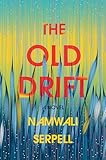 Maybe I’m overreading—this is congenital for me, I admit. But it seems to me that even on their own terms, these genre fictions explore a set of formal questions that take us beyond the usual truisms about the satisfactions of “psychology,” “emotion,” and “the human condition” in literary fiction—which comes more and more to look like just another genre. So what happens if we take this truth to be self-evident: that all genres are created equal? I believe each genre offers its own specific value and way to think through literature, by which I mean both to think about literature and to use literature to think. My own fiction writing has become increasingly informed by this sensibility. My debut novel, The Old Drift (Hogarth 2019) embraces “low” genres even as it ironizes them. Regardless of how my publishers and reviewers see it, for me, genre is a lens—a mode of seeing the world—not a label.
Maybe I’m overreading—this is congenital for me, I admit. But it seems to me that even on their own terms, these genre fictions explore a set of formal questions that take us beyond the usual truisms about the satisfactions of “psychology,” “emotion,” and “the human condition” in literary fiction—which comes more and more to look like just another genre. So what happens if we take this truth to be self-evident: that all genres are created equal? I believe each genre offers its own specific value and way to think through literature, by which I mean both to think about literature and to use literature to think. My own fiction writing has become increasingly informed by this sensibility. My debut novel, The Old Drift (Hogarth 2019) embraces “low” genres even as it ironizes them. Regardless of how my publishers and reviewers see it, for me, genre is a lens—a mode of seeing the world—not a label.


 I adore those contemporary fictions, like Mitchell’s Cloud Atlas or Jennifer Egan’s A Visit from the Goon Squad, that sing genre with their whole chests, that don’t pull punches or bleed it of its fun, color, and momentum, and respect it enough to engage with it. I read two books this year that fit this description. Carmen Maria Machado’s Her Body and Other Parties reimagines fairy tales and surrealism, and one of its standout stories, “Especially Heinous,” is a set of evolving synopses of episodes of Law and Order: SVU, a genre show if ever there was one. I love the unaccountable weirdness of that story—the girls with bells for eyes, the ubiquitous dun dun—and how it imitates the longueur of watching crime shows: the running jokes, the strange entanglement of voyeurism and misogyny in “hate-watching,” and that thrumming desire for release, however implausible.
I adore those contemporary fictions, like Mitchell’s Cloud Atlas or Jennifer Egan’s A Visit from the Goon Squad, that sing genre with their whole chests, that don’t pull punches or bleed it of its fun, color, and momentum, and respect it enough to engage with it. I read two books this year that fit this description. Carmen Maria Machado’s Her Body and Other Parties reimagines fairy tales and surrealism, and one of its standout stories, “Especially Heinous,” is a set of evolving synopses of episodes of Law and Order: SVU, a genre show if ever there was one. I love the unaccountable weirdness of that story—the girls with bells for eyes, the ubiquitous dun dun—and how it imitates the longueur of watching crime shows: the running jokes, the strange entanglement of voyeurism and misogyny in “hate-watching,” and that thrumming desire for release, however implausible.


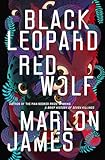
 After a casual exchange with Victor LaValle on Twitter about the creepy eugenical subtext of one of the animated movies I love-hate, The Incredibles, I plucked his novel The Changeling from the middle of my stack and opened it. Twelve hours later, I closed it, cheeks streaked with tears, throat sore from laughter. A beautiful, moving Gothic/fantasy/fairy tale, The Changeling is a masterful novel that doesn’t try to smooth away any of the dark, rough edges of its genres. It doesn’t shy from realism either, though—as when it literalizes the internet “troll” as a pale gross dude who sits in front of screens and gets paid for webcam views. This is clearly dragging fantasy and its fans, but LaValle has mad love for the genre, too. His novel The Ballad of Black Tom is essentially a love-hate letter to the virulently racist H.P. Lovecraft. It’s next on my list, along with a growing set of recent Afro-fantasy novels. Pettiness is not just a trifling game, it can be immensely generative. After all, we pay close attention to what we “haterate,” and sometimes that attention can yield glorious acts of creation.
After a casual exchange with Victor LaValle on Twitter about the creepy eugenical subtext of one of the animated movies I love-hate, The Incredibles, I plucked his novel The Changeling from the middle of my stack and opened it. Twelve hours later, I closed it, cheeks streaked with tears, throat sore from laughter. A beautiful, moving Gothic/fantasy/fairy tale, The Changeling is a masterful novel that doesn’t try to smooth away any of the dark, rough edges of its genres. It doesn’t shy from realism either, though—as when it literalizes the internet “troll” as a pale gross dude who sits in front of screens and gets paid for webcam views. This is clearly dragging fantasy and its fans, but LaValle has mad love for the genre, too. His novel The Ballad of Black Tom is essentially a love-hate letter to the virulently racist H.P. Lovecraft. It’s next on my list, along with a growing set of recent Afro-fantasy novels. Pettiness is not just a trifling game, it can be immensely generative. After all, we pay close attention to what we “haterate,” and sometimes that attention can yield glorious acts of creation.
More from A Year in Reading 2018
Don’t miss: A Year in Reading 2017, 2016, 2015, 2014, 2013, 2012, 2011, 2010, 2009, 2008, 2007, 2006, 2005









